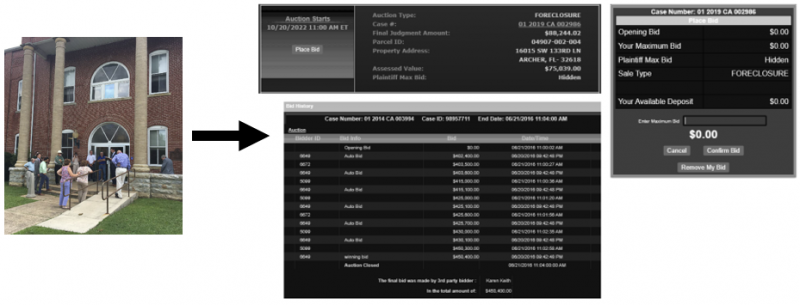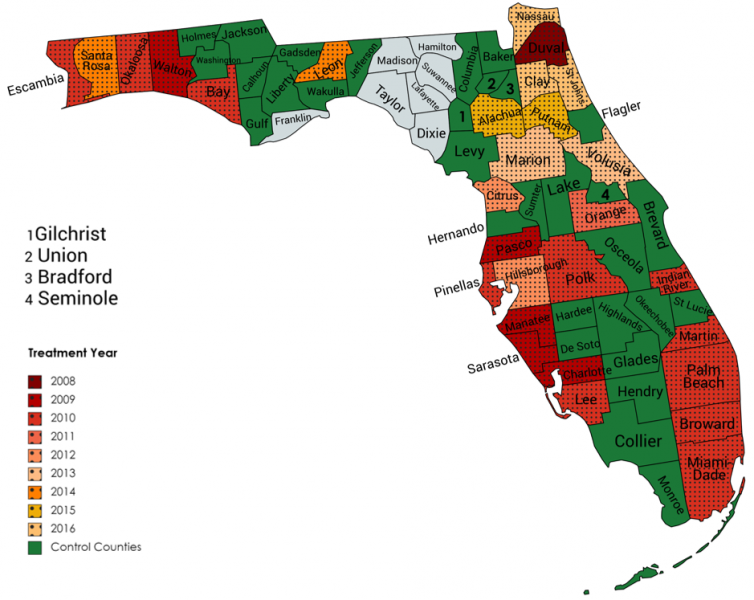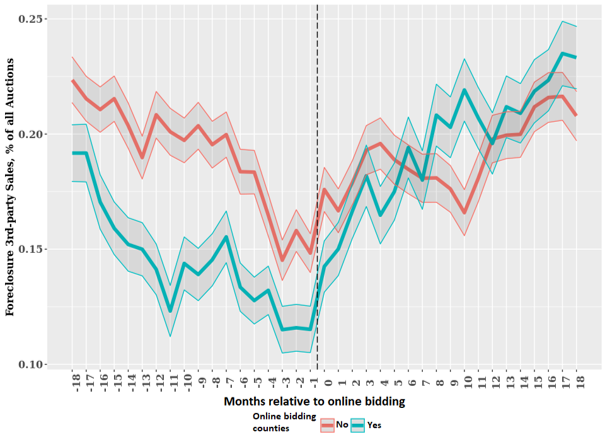References
Asquith, P., Gertner, R., and Scharfstein, D. (1994). Anatomy of financial distress: An examination of junk-bond issuers. The quarterly journal of economics, 109(3):625–658.
Baker, A., Larcker, D. F., and Wang, C. C. (2021). How much should we trust staggered difference-in-differences estimates? Available at SSRN 3794018.
Bakos, J. Y. (1997). Reducing buyer search costs: Implications for electronic marketplaces. Management science, 43(12):1676–1692.
Bakos, Y. (1998). The emerging role of electronic marketplaces on the internet. Communications of the ACM, 41(8):35–42.
Benmelech, E., Garmaise, M. J., and Moskowitz, T. J. (2005). Do liquidation values affect financial contracts? evidence from commercial loan contracts and zoning regulation. The Quarterly Journal of Economics, 120(3):1121–1154.
Brunnermeier, M. K. and Pedersen, L. H. (2009). Market liquidity and funding liquidity. The Review of Financial Studies, 22(6):2201–2238.
Burkhart, A. M. (2017). Fixing foreclosure. Yale L. & Pol’y Rev., 36:315.
Campbell, J. Y., Giglio, S., and Pathak, P. (2011). Forced sales and house prices. American Economic Review, 101(5):2108–31.
Cengiz, D., Dube, A., Lindner, A., and Zipperer, B. (2019). The effect of minimum wages on low-wage jobs. The Quarterly Journal of Economics, 134(3):1405–1454.
Fisher, L. M., Lambie-Hanson, L., and Willen, P. (2015). The role of proximity in foreclosure externalities: Evidence from condominiums. American Economic Journal: Economic Policy, 7(1):119–40.
Gao, M. and Huang, J. (2020). Informing the market: The effect of modern information technologies on information production. The Review of Financial Studies, 33(4):1367–1411.
Gerardi, K., Rosenblatt, E., Willen, P. S., and Yao, V. (2015). Foreclosure externalities: New evidence. Journal of Urban Economics, 87:42–56.
Harding, J. P., Rosenblatt, E., and Yao, V. W. (2009). The contagion effect of foreclosed properties. Journal of Urban Economics, 66(3):164–178.
Hendershott, T., Jones, C. M., and Menkveld, A. J. (2011). Does algorithmic trading improve liquidity? The Journal of finance, 66(1):1–33.
Jensen, R. (2007). The digital provide: Information (technology), market performance, and welfare in the south indian fisheries sector. The quarterly journal of economics, 122(3):879–924.
Kiyotaki, N. and Moore, J. (1997). Credit cycles. Journal of political economy, 105(2):211–248.
Lin, Z., Rosenblatt, E., and Yao, V. W. (2009). Spillover effects of foreclosures on neighborhood property values. The Journal of Real Estate Finance and Economics, 38(4):387–407.
Menkveld, A. J. (2013). High frequency trading and the new market makers. Journal of financial Markets, 16(4):712–740.
O’Hara, M. (2015). High frequency market microstructure. Journal of Financial Economics, 116(2):257–270.
Pence, K. M. (2006). Foreclosing on opportunity: State laws and mortgage credit. Review of Economics and Statistics, 88(1):177–182.
Shleifer, A. and Vishny, R. W. (1992). Liquidation values and debt capacity: A market equilibrium approach. Journal of Finance, 47(4):1343–1366.






